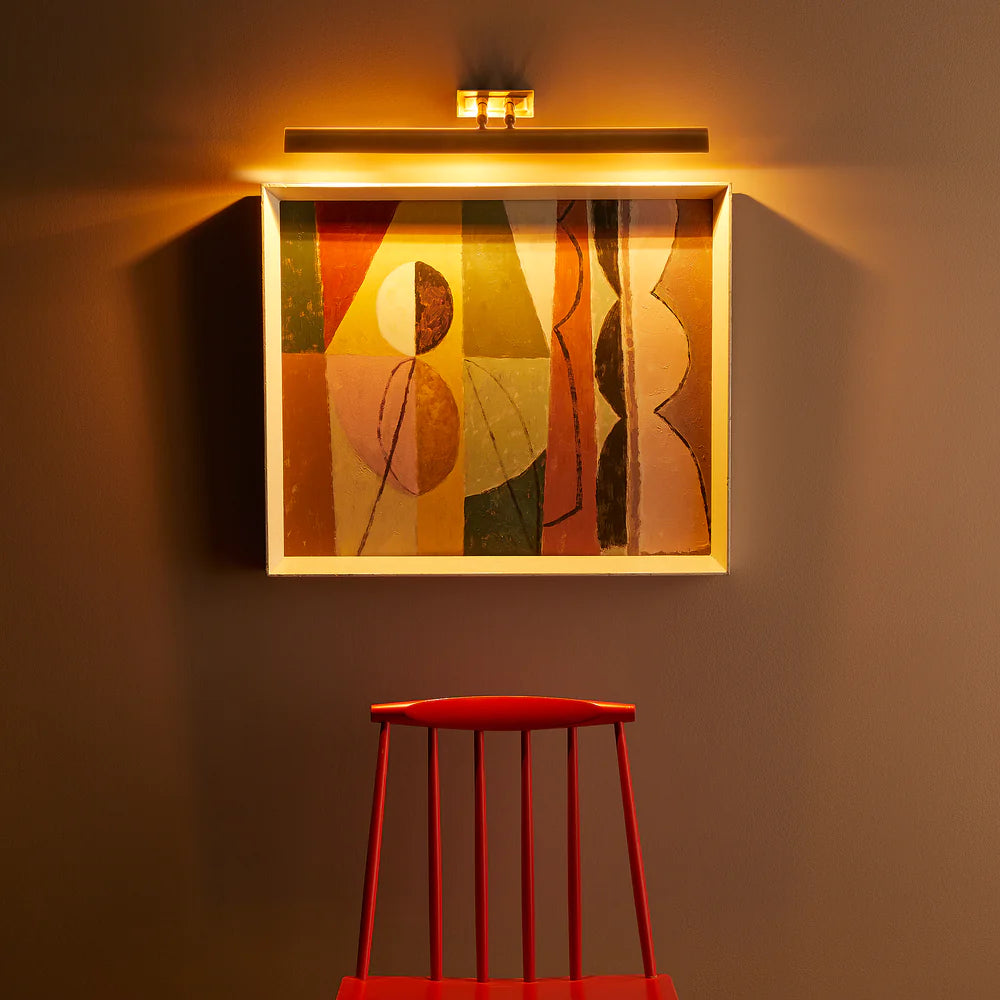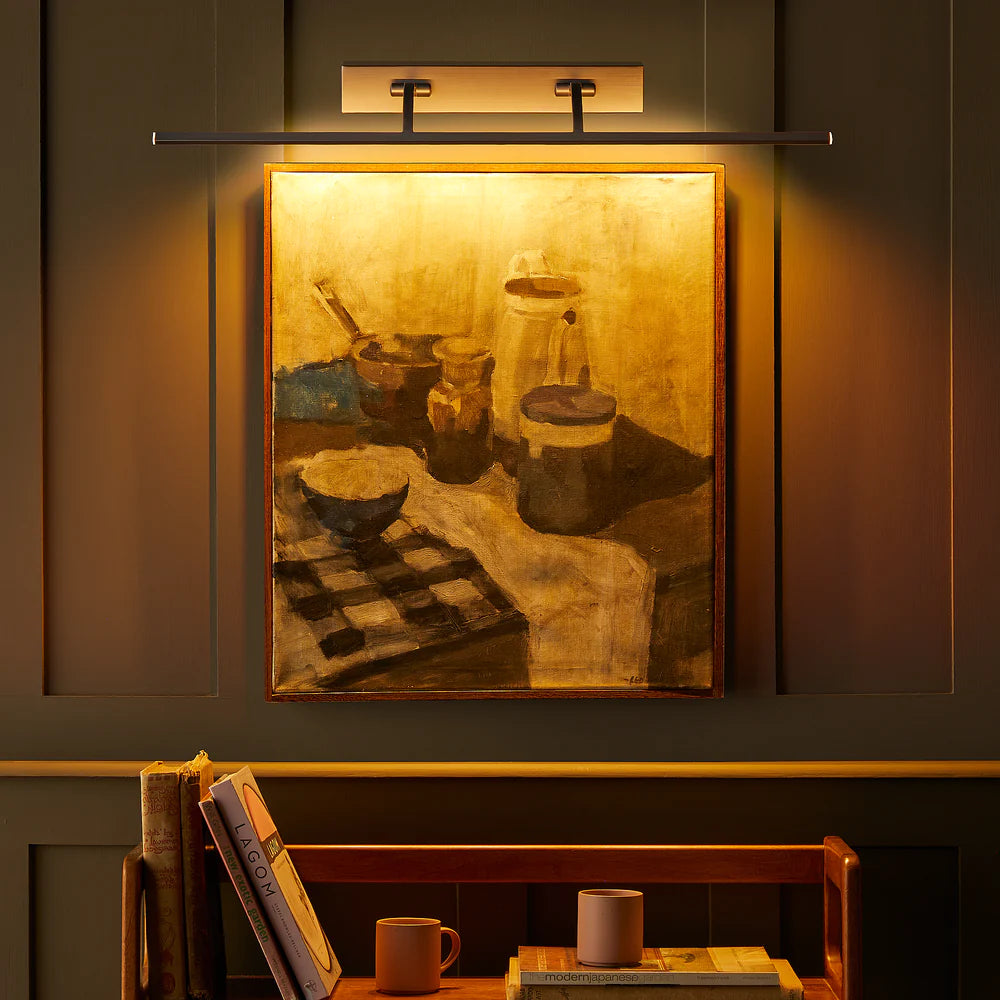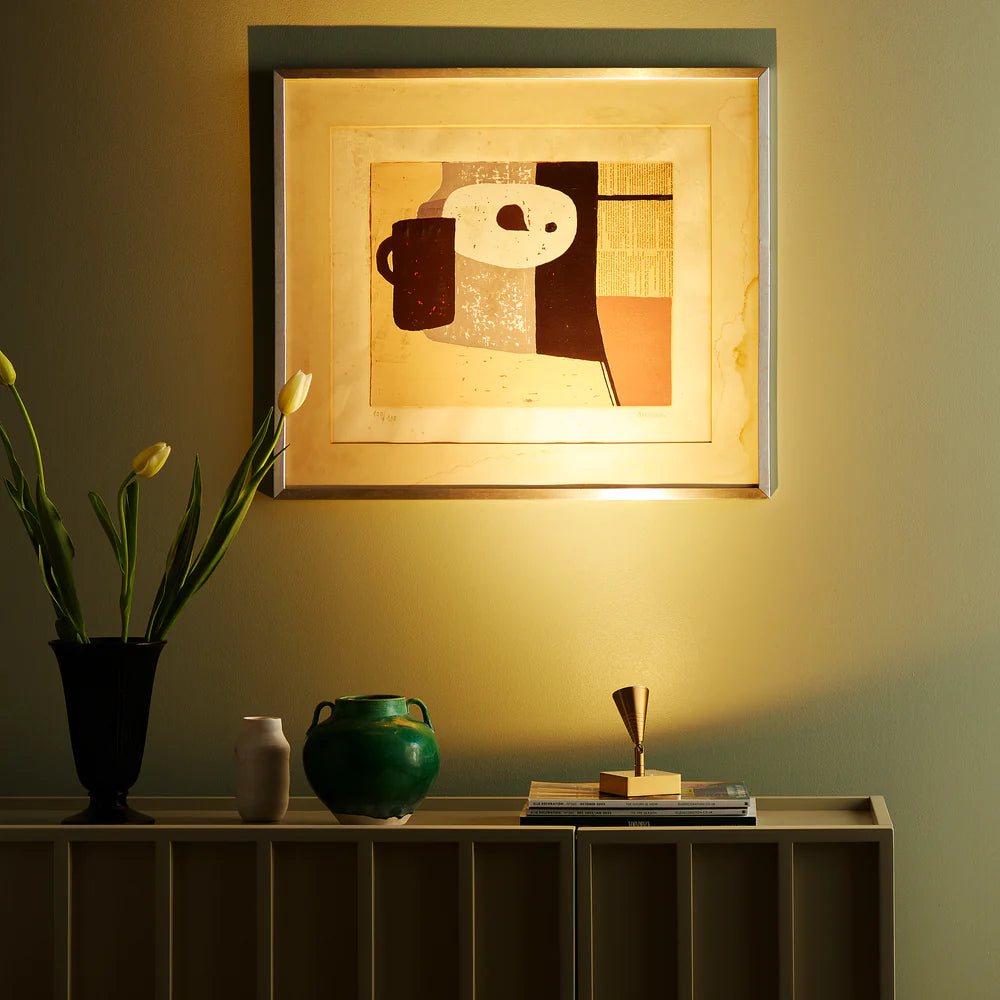 Daunted by the thought of buying and displaying decorative art? Not sure where to start? Allow us to help, with expert tips on art from an interior design perspective…
Daunted by the thought of buying and displaying decorative art? Not sure where to start? Allow us to help, with expert tips on art from an interior design perspective…
Displaying art is a fabulous way to bring an interior design scheme together. You can be subtle with decorative pieces working in harmony with your room’s colours and patterns, or go big and bold with a striking statement.
But buying art can seem like a bit of a minefield… so much choice! Such wild variations in price! And then how and where should you display it? If you’re feeling daunted, here’s a Q&A guide to artworks from an interior design point of view - including, naturally, how to really make your artworks sing with specialist picture lights…
1. What style of decorative art is best? (Hint: it should be something you love…)
The first thing to bear in mind with a piece of art for your home – especially if you’re making a serious financial investment – is that you’re going to have to live with it every day. So, regardless of what you think your friends and visitors might make of it, the only person whose taste it absolutely has to appeal to is you.
So think first and foremost about what makes you happy - whether that’s decorative or figurative art, original paintings or classic prints. As well as online art browsing (always great fun), why not have a day out crawling local galleries and exhibitions. When something speaks to you, you’ll generally know it.
But there is another, objective decision to make, which is: what impact do you want the art to have on the look of the room it’s in? So subtly decorative, or statement piece? Do you want your artwork to complement the space for a harmonious feel, or create a bold, dramatic contrast?
 Still life, lit by Pooky's dimmable Blake picture light in bronze
Still life, lit by Pooky's dimmable Blake picture light in bronze
2. What size should a decorative artwork be?
With decorative art, size really does matter. For practical purposes, you need to know that your favourite piece of artwork is going to fit where you’re planning to put it, but it’s also important to get the size right from an aesthetic point of view.
As Michelle Belak and Melissa Tucker, founders of AttikoArt, emphasise: “It’s super important to think about the scale of the wall where you are going to hang your art as well as the furniture around it. It’s all about proportion. If your artwork is going to be placed above a large sofa or a headboard, be brave! Go BIG! There’s nothing sadder than an apologetic, overly small piece of art overshadowed by the large scale objects around it.”
As a general guide, if you’re choosing a piece of art to go on the wall over a sofa, you should go for something that’s around two-thirds of the width of the sofa. Aim to leave a minimum gap of 15 cm between the top of any furniture and the bottom of the frame.
 A lovely use of multiple colour-themed smaller artworks over a sofa by interior designer Lonika Chande (image: Lonika Chande)
A lovely use of multiple colour-themed smaller artworks over a sofa by interior designer Lonika Chande (image: Lonika Chande)
3. Where are the best places to display decorative art in the home?
Great interior design is about tailoring the decor of a room to the way you live. So when choosing where to hang artworks, think hard about what the room is used for, and the kind of mood and energy you’re looking to create in it…cosy and calming, fun and vibrant, clean and minimalistic?
Here are some ideas for different rooms…
- In a sitting room or other shared space there’s an opportunity to make a statement: try a large eye-catching piece above the fireplace or sofa for a strong visual focal point
- The dining room is a great place to hang a striking piece that will encourage conversation amongst your guests: try bold abstract shapes or colourful botanical prints
- The hallway is often ideal for displaying a gallery of smaller pieces of artwork or portrait, themed on colour/monochrome or subject lines
- For a bedroom or home office you may want to opt for a more calm and serene feel…landscapes and natural colours, or abstract designs using a muted colour palette.
- Kitchens and bathrooms can be ideal for displaying themed decorative art – just be sure to choose a format that’s not susceptible to humidity and is easy to clean, such as prints in glass frames..

The muted palette of this artwork blends harmoniously with the decor in this room by @1894 home. Featuring Pooky's Pitcheroo picture light
4. How should you hang artworks within a room?
One of the most common mistakes that people make - according to Attiko Art’s Michelle and Melissa, is to hang artworks too high: “Think of your furniture and art as one single block, not as two separate, unrelated, objects. They have to 'hang together' spatially - and you won’t get that if the canvas is closer to the ceiling than it is to the furniture below it”.
On a practical note, particularly for valuable original paintings, it’s important to minimise exposure to natural light, as that can cause serious damage to an artwork over time.
But above all you want to place your artwork where it will be seen! Talking of which…
5. What is the best way to illuminate decorative art?
Once you’ve chosen your piece of decorative art, you’ll want to make the most of it. Picture lights offer the perfect solution, allowing you to showcase your treasured artwork in all its glory, without having to worry about the damaging effects of natural light.
As a general rule of thumb, for a portrait picture you should choose a picture light that’s about half the width of the picture, while for a landscape picture you should choose a light that’s between a third and a half the width of the picture.
We’ve recently introduced some new additions to our collection of stylish picture lights, including the Lautrec picture light (top) with its beautiful elliptical hood; handmade from pure brass and available in a range of sizes, it will truly make the most of your chosen masterpiece.
Meanwhile, our Milton picture light is as sleek as can be and will bring a note of elegance and sophistication to your display.
And most flexible of all is the Pixii rechargeable picture light which you can hang from a hook as a wall light or pop it on a table and point it at a painting…
 Pixii rechargeable picture light
Pixii rechargeable picture light
See also:
Picture lights - how to illuminate your paintings and artworks
Meet the designers: Michelle Belak and Melissa Tucker of AttikoArt

 Milton picture light in brass
Milton picture light in brass


